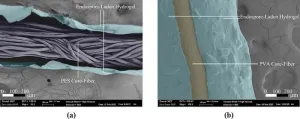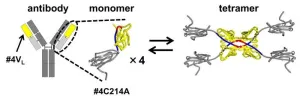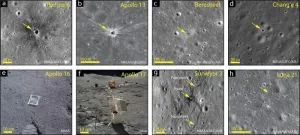(Press-News.org) SAN ANTONIO – Patients with low-risk ductal carcinoma in situ (DCIS) who skipped adjuvant radiotherapy after breast-conserving surgery had comparable five-year outcomes to those with high-risk DCIS who received adjuvant radiotherapy, according to results from the E4112 clinical trial presented at the San Antonio Breast Cancer Symposium, held December 5-9, 2023.
“Nearly all women with DCIS—a noninvasive form of breast cancer—will have their cancer successfully removed, but some women will have a high risk of the disease returning or progressing to invasive breast cancer,” said Seema A. Khan, MD, a professor of surgery and the Bluhm Family Professor of Cancer Research at the Feinberg School of Medicine and Lurie Comprehensive Cancer Center of Northwestern University.
She explained that most patients with DCIS undergo breast-conserving surgery followed by adjuvant radiotherapy, which is intended to reduce the likelihood that the disease returns as DCIS or as invasive breast cancer. About a quarter of patients with DCIS undergo mastectomy instead.
“There is an increasing realization that DCIS carries an unnecessary treatment burden for many women,” Khan noted. “Using personalized diagnostic tools to predict the risk of recurrence or progression may prevent excessive treatment for some patients.”
Khan and colleagues conducted the E4112 clinical trial to assess the potential of bilateral magnetic resonance imaging (MRI) coupled with a DCIS gene profile to guide treatment for patients with DCIS. Previously reported results from this trial indicated that MRI could help to identify patients who could opt for the less intensive breast-conserving surgery instead of a mastectomy, Khan noted.
The latest analysis aimed to determine if some of those patients who underwent breast-conserving surgery based on MRI results could also safely forego subsequent radiotherapy based on a DCIS gene expression profile. This approach could help reduce treatment in patients whose DCIS carries a low risk of recurrence, she explained.
The analysis included 171 patients with DCIS who underwent breast-conserving surgery and whose tumor tissue was profiled using the Oncotype DX Breast DCIS Score test.
The Oncotype DX Breast DCIS Score is a laboratory test that examines expression levels of cancer-related genes in DCIS tissue. The results of the test are reported as a score between zero and 100, with higher scores associated with higher expression of cancer-related genes and a greater likelihood of disease recurrence in the same breast, either as DCIS or as invasive cancer.
In this study, patients who received a score lower than 39 were considered to have low-risk DCIS and were eligible to skip adjuvant radiotherapy, while patients with scores 39 or higher were recommended to receive adjuvant radiotherapy.
The adherence to the score-based treatment recommendations was 93%: 75 of 82 patients with low-risk DCIS elected to skip adjuvant radiotherapy, and 84 of 89 patients with high-risk DCIS opted to undergo adjuvant radiotherapy.
After a median follow-up of five years after surgery, 5.1% of the 82 patients with low-risk DCIS and 4.5% of the 89 patients with high-risk DCIS experienced disease recurrence in the same breast as the primary DCIS. Similar results were found when comparing only those patients who adhered to the score-based recommendations: 5.5% of the 75 patients with low-risk DCIS who skipped radiotherapy experienced disease recurrence, as compared with 4.8% of the 84 patients with high-risk DCIS who received radiotherapy. The differences were not statistically significant nor influenced by patient age in either analysis.
“Our results indicate that the Oncotype DX Breast DCIS Score was an effective tool to stratify patients for adjuvant radiotherapy following breast-conserving surgery. Women who skipped radiation based on this score did not experience an excess risk of recurrence in the same breast during the five-year follow-up period,” said Khan. “These findings reveal a new approach to guide treatment decisions by determining which patients may benefit from radiotherapy and which patients may safely forego it.”
Combined with previously reported data from the trial, the results demonstrate the potential of MRI and the Oncotype DX Breast DCIS Score to guide surgical and adjuvant treatment, respectively, for patients with DCIS, she added.
Limitations of the study include the short follow-up time, the small sample size, and the nonrandomized design.
Study E4112 was designed and conducted by the ECOG-ACRIN Cancer Research Group with support from the National Cancer Institute of the National Institutes of Health. Other participating cooperative groups included the Alliance for Clinical Trials in Oncology, NRG Oncology, and SWOG Cancer Research Network. Khan declares no conflicts of interest.
END
Skipping adjuvant radiotherapy may not impact risk of recurrence or progression in patients with low-risk DCIS
MRI and a DCIS gene profile were used to stratify patients for treatment
2023-12-08
ELSE PRESS RELEASES FROM THIS DATE:
Some breast cancer survivors may safely de-escalate mammography three years after surgery
2023-12-08
Women 50 or older who de-escalated to less-frequent mammography three years after curative surgery for early-stage breast cancer had similar outcomes to women who received annual mammography, according to results from the Mammo-50 trial presented at the San Antonio Breast Cancer Symposium, held December 5-9, 2023.
Both U.S. and U.K. guidelines recommend annual breast cancer screening following surgery to remove early-stage breast cancer; in the U.S., annual mammography is recommended indefinitely, and in the U.K., it is recommended for five years, followed by screening every three years for patients 50 years and older.
However, the optimal screening schedule has yet to ...
Potentially targetable fusion RNAs may be more common in metastatic breast cancer than previously realized
2023-12-08
SAN ANTONIO – Comprehensive profiling of fusion RNAs present in a large cohort of metastatic breast tumors revealed unique fusion mutations that may be therapeutically targetable, according to results presented at the San Antonio Breast Cancer Symposium, held December 5-9, 2023.
Fusion mutations occur when a portion of one gene becomes fused to a portion of another, which can create gene products with new functions. They are common in cancer types that are characterized by genomic rearrangements and structural damage to the DNA, including breast cancer.
“Fusion RNAs may serve as ...
Study reveals insights into tacking diabetic kidney disease - with a side order of how anti-obesity drugs work
2023-12-08
Data from Australian researchers could partly explain why a trial of a new drug for diabetes, was recently halted because it was found to be so effective. Importantly, the data also reveals how anti-obesity drugs like Ozempic, actually work, which to date have been a mystery.
In early November the FLOW trial of the drug semaglutide on the progression of renal impairment in people with type 2 diabetes and chronic kidney disease was halted ahead of schedule because of the drug’s efficacy.
Part of the rationale for the cessation of the trial could be explained by ...
Study on battery recycling shows China is in 1st place
2023-12-08
With the increase in the production of batteries for electric vehicles, demand is also rising for the necessary raw materials. In view of risks to the supply chain, environmental problems and precarious working conditions which are all associated with the mining and transportation of these materials, the recycling of battery materials has become an important issue in research, politics and industry. Prof. Stephan von Delft from the University of Münster (Germany) heads a team of researchers from the fields of science ...
Veins of bacteria could form a self-healing system for concrete infrastructure
2023-12-08
In hopes of producing concrete structures that can repair their cracks, researchers from Drexel University’s College of Engineering are putting a new twist on an old trick for improving the durability of concrete. Fiber reinforcement has been around since the first masons were mixing horsehair into their mud. But the Drexel research team is taking this method to the next level by turning reinforcing fibers into a living tissue system that rushes concrete-healing bacteria to the site of cracks to repair the damage.
Recently reported in the journal Construction ...
First observation of structures resulting from 3D domain swapping in antibody light chains
2023-12-08
Ikoma, Japan – Antibodies (immunoglobulins) are Y-shaped proteins that recognize and neutralize specific pathogens. Their ability to target specific molecules or cells has made them promising candidates for future drug development. However, their light chains—parts of the antibody that contribute to recognizing and binding to specific antigens—misfold and aggregate, leading to amyloidosis, a condition that brings about complications and tissue dysfunction in the body. In the context of drug development, antibody aggregation can compromise their capacity to bind to antigens ...
Scholars say it's time to declare a new epoch on the moon, the 'lunar Anthropocene'
2023-12-08
LAWRENCE — Human beings first disturbed moon dust on Sept. 13, 1959, when the USSR’s unmanned spacecraft Luna 2 alighted on the lunar surface. In the following decades, more than a hundred other spacecraft have touched the moon — both crewed and uncrewed, sometimes landing and sometimes crashing. The most famous of these were NASA’s Apollo Lunar Modules, which transported humans to the moon’s surface to the astonishment of humankind.
In the coming years, missions and projects already planned will change the face of the moon ...
Researchers safely integrate fragile 2D materials into devices
2023-12-08
Two-dimensional materials, which are only a few atoms thick, can exhibit some incredible properties, such as the ability to carry electric charge extremely efficiently, which could boost the performance of next-generation electronic devices.
But integrating 2D materials into devices and systems like computer chips is notoriously difficult. These ultrathin structures can be damaged by conventional fabrication techniques, which often rely on the use of chemicals, high temperatures, or destructive processes like etching.
To overcome this challenge, researchers from MIT and elsewhere have developed a new technique to integrate 2D materials into devices in a single ...
Digital multi-sided platforms transform traditional value chains in business-to-business service sales
2023-12-08
Various digital platforms are becoming increasingly common in business-to-business (B2B) activities. They enable building competitiveness and boosting selling and buying. The platforms also offer different ways of building long-term customer relationships in B2B service sales. A recent study found that digital platforms are transforming traditional value chains based on linear value creation towards a platform-based, multi-sided, digital value network.
“The network is administered and orchestrated by the platform owner, who must attract a sufficient number ...
The first European manifesto for more sustainable museums
2023-12-08
Venice, Amsterdam, Paris, December 8, 2023 – Today, the Center for Cultural Heritage Technologies of the Italian Institute of Technology (CCHT-IIT), the University of Amsterdam/Rijksmuseum, and CNRS/École Normale Supérieure de Paris-Saclay launch the first manifesto for sustainable conservation of cultural heritage. The manifesto aims to improve conservation practices and promote more sustainable and ecological methods in museum practices.
During the COP28 in Dubai, the United Nations event on ...
LAST 30 PRESS RELEASES:
Anxiety and insomnia may lower natural killer cell count, potentially repressing immune function
How parasitic, asexual plants evolve and live
Research spotlight: A subset of patients with depression could benefit from anti-inflammatory treatment
New fully digital design paves the way for scalable probabilistic computing
Membrane electrode assembly design for high-efficiency anion exchange membrane water electrolysis
U.S. debt ceiling disputes show measurable impact on global crude oil markets
Climate extremes triggered rare coral disease and mass mortality on the Great Barrier Reef
Direct observation reveals “two-in-one” roles of plasma turbulence
Humans rank between meerkats and beavers in monogamy ‘league table’
US fossil reveals early mass-burial event and ancient microbial attack
Sedative choice could improve outcomes for breathing tube patients
New superconducting thin film for quantum computer chips
Simulations reveal protein "dynamin" constricts cell membranes by loosening its grip
Nearly 1 in 5 UK emergency department patients cared for in corridors/waiting rooms
Heavy energy drink intake may pose serious stroke risk, doctors warn
Violence against women and children among top health threats: New global study reveals disease burden far larger than previously estimated
Predicting who is at risk of developing type 1 diabetes, as new drugs now available
New gene-mapping method unlocks hidden drivers of cancer
Ocean current and seabed shape influence warm water circulation under ice shelves
Call to increase funding for ‘invisible’ Deaf victim-survivors of domestic abuse
University of Maryland School of Medicine names distinguished scientist and academic leader Gerald M. Wilson, PhD, as Chair of the Department of Biochemistry and Molecular Biology
Receptors in mammary glands make livestock and humans inviting hosts for avian flu
Icy hot plasmas
Treating adults with autism: Maryland Clinical Center offers national blueprint for care after pediatric transition
University of Phoenix College of Doctoral Studies releases white paper on reclaiming control to build workforce resilience
NCCN Summit seeks to improve care for veterans and first responders with cancer from line-of-duty exposure
ERC Consolidator Grant for soft robotics researcher
Dual-action arts and wellbeing program transforms dementia care
The global plastic waste trade contributes to coastal litter in importing countries, study shows
UT Dallas partners with Tech Mahindra on AI innovation
[Press-News.org] Skipping adjuvant radiotherapy may not impact risk of recurrence or progression in patients with low-risk DCISMRI and a DCIS gene profile were used to stratify patients for treatment



